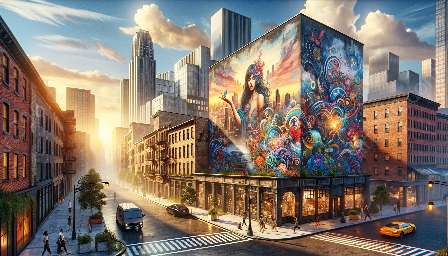Street art and algorithmic art have been merging in intriguing ways, transforming the urban landscape and pushing the boundaries of creative expression. This article will delve into the fusion of algorithmic art and street art, examining the impact of digital technology on this powerful form of artistic rebellion.
The Evolution of Street Art
Street art has a rich history, dating back to ancient civilizations where images and symbols were used to communicate cultural and political messages. Over time, the art form evolved, incorporating graffiti, stencils, murals, and various other techniques to leave indelible marks on the streets of cities worldwide.
The Rise of Algorithmic Art
Algorithmic art, also known as algorithmic visual art, is a form of art that utilizes algorithms to create visual works. It is characterized by its emphasis on process, where the artist often sets rules or parameters for the algorithm to follow, resulting in visually stunning and complex artworks.
The Convergence of Styles
In recent years, street artists have begun integrating algorithmic art into their works, blending traditional street art techniques with computational algorithms to create dynamic and ever-changing pieces. These artworks often come to life through digital screens or projection mapping, offering a unique interactive experience to the viewers.
Digital Technology’s Influence
The influence of digital technology on street art is undeniable. The accessibility of digital tools and software has empowered street artists to experiment with new mediums, techniques, and styles. From incorporating augmented reality to creating interactive street art installations, digital technology has opened up a whole new realm of possibilities for street artists.
Impact on Urban Landscapes
Algorithmic art in street art has transformed urban landscapes, turning once-static walls and buildings into dynamic canvases that evolve over time. Digital technology enables these artworks to react to environmental factors, audience interactions, or even real-time data, creating an ever-changing visual spectacle within city spaces.
Social and Cultural Relevance
The fusion of algorithmic art and street art also reflects the digital era’s influence on social and cultural dynamics. These technologically infused artworks often spark conversations about the intersection of art and technology, the evolving nature of public art, and the impact of digital culture on creative expression.
Embracing the Future
As technology continues to advance, the relationship between algorithmic art and street art will undoubtedly evolve further. From AI-generated murals to collaborative digital street art projects, the future promises an exciting and boundary-pushing exploration of artistic possibilities in urban environments.

